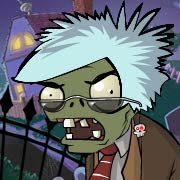There are many ways that Atomic Bonds can be described or defined, many scientists use their own comprehension to define on their own way the Atomic Bonds.
There are many types of Atomic Bonds, depending on which atoms are bonded together and under what circumstances.
 |
| Source: www.uniongas.com |
For example, Ice melting is a Physical Reaction where water just changes from a solid state to a liquid state.
Most of the elements follow a certain “rule” as i like to call it, they are jealous of the Noble Gases (I'm not kidding), elements want to look like noble gases because they are stable and non-reactive (is normal conditions).
What’s that special characteristic of noble gases that makes everyone wanting look like them? They have their last Shell FULL, that’s it; they have 8 electrons on the last Shell making them unable to react with other elements (this rule does not apply to all elements; some are weird and hard to understand).







3 comments:
ok i get you so far, i too want to be like a noble gas []:3-
but 8 electrons O.o mmnh ill follow you for more on this :D
I thought that they had 7? or is that normal chemicals? I forget.
I remember this now, and the bunch of stuff that went with it when I first learned this! About Hydrocarbons and suchlike! This was a good read, thanks!
Post a Comment